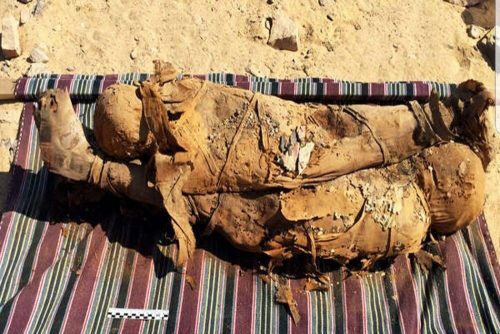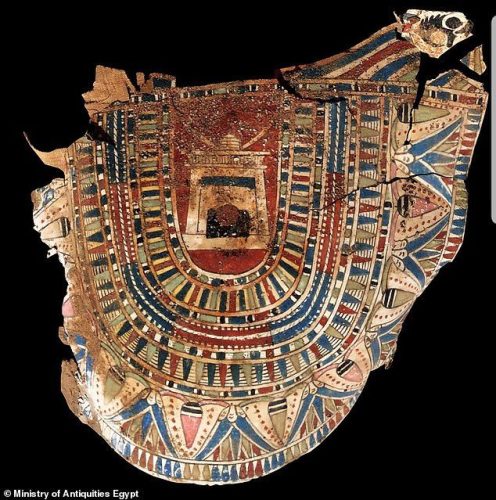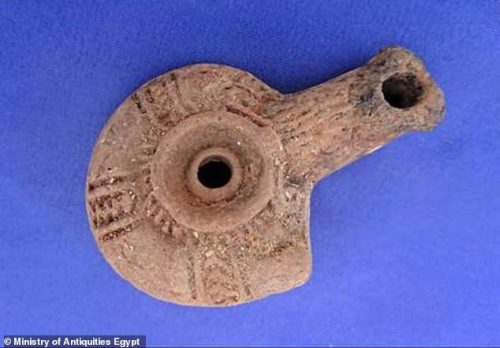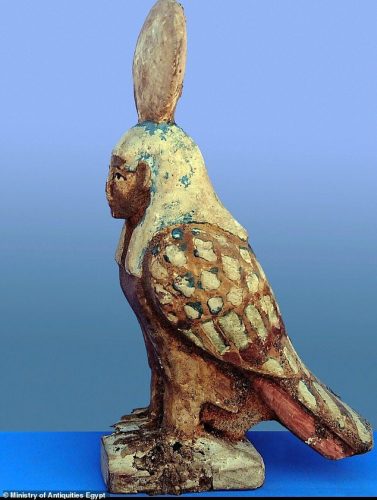In the realm of archaeology, there are moments that send shivers down the spines of researchers and history enthusiasts alike. Such moments serve as a portal to the past, offering a glimpse into ancient civilizations and their customs. Recently, an extraordinary discovery was made in Egypt—a mother and child were found in a burial chamber that had remained untouched for over two millennia.

This remarkable find not only sheds light on ancient Egyptian burial practices but also opens a window into the lives of these individuals. In this article, we will delve into the details of this captivating archaeological discovery and its implications for our understanding of ancient Egypt.
The Discovery
In 2023, a team of archaeologists and Egyptologists embarked on an excavation mission in Luxor, a city renowned for its historical significance.
Their primary objective was to explore the lesser-known burial chambers beneath the city, hoping to unearth artifacts and gain insights into ancient Egyptian burial customs. Little did they know that this expedition would lead to a discovery of unparalleled significance.
As they ventured deeper into the subterranean labyrinth, the team stumbled upon a burial chamber unlike any they had seen before.

It was adorned with intricate hieroglyphs and decorated with colorful murals depicting scenes from ancient Egyptian life. Among the various sarcophagi and artifacts, they found one that stood out—a beautifully crafted, ornate sarcophagus adorned with intricate carvings.
Inside this sarcophagus lay the remains of a mother and her child, preserved remarkably well despite the passage of more than 2,000 years.
The mother was adorned with jewelry, and her child was nestled in her arms, as if cradled in eternal sleep. The scene was both poignant and awe-inspiring, offering a glimpse into the profound reverence the ancient Egyptians held for the cycle of life and death.
Burial Practices in Ancient Egypt
To understand the significance of this discovery, it is essential to delve into the burial practices of ancient Egypt. The ancient Egyptians believed in an afterlife, and they went to great lengths to ensure that the deceased would continue their journey in the afterworld comfortably.

Burial chambers were often filled with provisions, personal belongings, and various items to aid the departed in the next life.
The mother and child found in the Luxor burial chamber were no exception. Their sarcophagus contained a wealth of offerings, including food, jewelry, and pottery, which would accompany them in the afterlife. The mother’s jewelry spoke to her status, suggesting that she held a position of significance in her community.
Significance and Implications
The discovery of the mother and child in Luxor’s burial chamber is significant on several levels. Firstly, it offers valuable insights into the socio-economic and cultural aspects of ancient Egyptian society. The woman’s adornments and the lavish offerings in her sarcophagus suggest that she was of higher social standing, providing researchers with a glimpse into the class structure of that era.

Secondly, the impeccable preservation of the remains, despite the passage of two millennia, is a testament to the embalming and burial techniques of the time. This find could offer invaluable information to archaeologists and Egyptologists, shedding light on the methods employed in ancient Egypt to preserve the deceased.
Moreover, the poignant representation of a mother cradling her child in the afterlife reinforces the deep-rooted beliefs and customs of the ancient Egyptians. This discovery emphasizes the enduring nature of maternal love and care, even beyond death.
Conclusion
The discovery of the mother and child in the Luxor burial chamber is a testament to the power of archaeology in unraveling the mysteries of the past. It not only provides insights into ancient Egyptian burial practices but also offers a poignant glimpse into the lives of these individuals who lived over two millennia ago.
As researchers continue to study and analyze the artifacts and remains from this remarkable find, we can expect to gain a deeper understanding of ancient Egyptian society, culture, and beliefs.

This discovery serves as a poignant reminder of the universality of human emotions, transcending time and reminding us of the enduring nature of love and family bonds. It is through such discoveries that we bridge the gap between the past and the present, enriching our collective knowledge of human history and our shared humanity.






